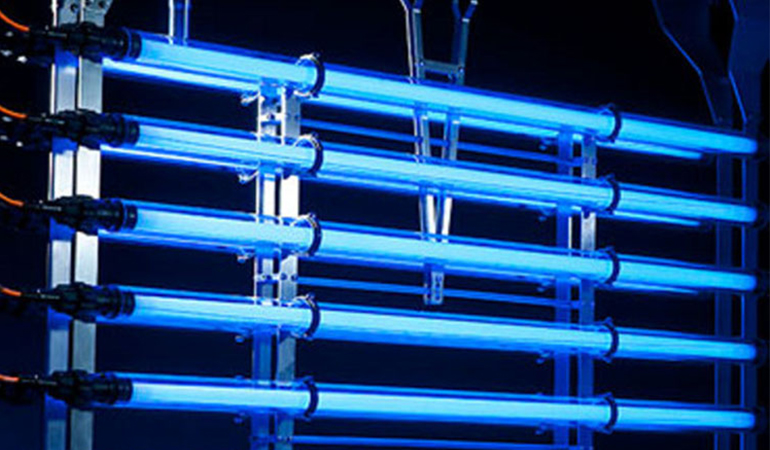
What is the Effect of UV Rays on Viruses and Bacteria?
Exposing the RNA / DNA molecules to UV rays at 265 nm wavelength is sufficient to alter the chemistry of the molecules and destroy the virus’s self-replication feature and the virus’s contamination feature. Since the wavelength of UV rays, which can neutralize microbes, is quite wide, different light sources can be used in UV sterilization.
Light sources in the 100-240 nm wavelength range convert oxygen molecules in the atmosphere to ozone molecules. For this reason, it is important to choose the preferred light source for sterilization above 240 nm wavelength.
While the 253.7 nm wavelengths of mercury vapor lamps operating at a low pressure of approximately 10-5 bar are used in photo disinfection applications, high pressure mercury lamps between 1-5 bar are used in UV sterilization applications.
Medium or high pressure mercury lamps produce much more UV light. Since these lamps have spectrum below 240 nm, they produce more ozone gas.
By adding indium to mercury-based UV lamps, it is possible to turn them into amalgam lamps and increase their luminous efficiency.
As an alternative to UV sterilization, KrCl emitting at a wavelength of 222 nm and XeBr excimer beam sources emitting at a wavelength of 282 nm can also be used. These lamps are used in limited areas due to their low UV light generation efficiency and high cost.
With the developing technology, LED UVs have recently been used due to some advantages such as adjusting the wavelengths and not containing mercury gas.
Today, although a low power of about 10-20 mW is obtained from one LED lamp, high power can be achieved by using arrays.







